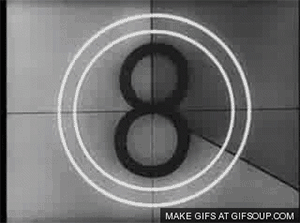 10/27 – 11/3
10/27 – 11/3
Thanks go out to the Video group for their input this week!
Reading movies
This week we’re moving from audio to video. We’ve been looking at related aspects – photography, sound, design – all along, but now we’re going to look at cinematic camerawork, and how it all comes together.
For starters, read Roger Ebert’s How the Read a Movie to get some basics of film analysis.
The following are part of Tony Zhou’s great series, Every Frame a Painting in which he analyzes details of film making. The entire series is worth watching and highly recommended, but I’m going to point out these in particular:
Joel & Ethan Coen – Shot | Reverse Shot
Memories of Murder (2003) – Ensemble Staging
Akira Kurosawa – Composing Movement
An interesting point about all of these is that they are about design. It may not be design in the Vignelli sense, but staging, composition and sets are all carefully and deliberately planned out to achieve particular goals, that is to say, designed.
F for Fake (1973) – How to Structure a Video Essay
The Silence of the Lambs – Who Wins the Scene?
David Fincher – And the Other Way is Wrong
Note that the focus in these is not on plot or acting, or even if the movies are good or not, but rather on the techniques that the directors use to tell stories.
Apply what we’ve learned
Now that we’ve spent some time thinking about how films are made and how we “read” them, let’s apply that new information to a film. Identify some particularly effective scenes from a superhero video you’ve watched. A couple of suggestions are CW’s The Flash and One Punch Man, both available on Netflix, but you are welcome to use something else if you prefer. Pick one of them to analyze in a video essay. Use the critical lens of this week’s reading and resources. This means you are going to make a video, using a scene from a movie, and discuss the scene in voice-over narration. You can upload your video essay to Vimeo or Youtube.
This assignment is a slight variation on the classic ds106 Video Essay assignment in the Assignment Bank. For this class, you need only analyze one scene, although you’re welcome to do more. In particular, your analysis should reflect what you learned by reading Ebert’s essay and watching the Tony Zhou videos.
MPEG Streamclip, iMovie and Windows MovieMaker are good tools for this project. There is a whole page with advice and information that should help with this assignment (although I haven’t updated it recently – if you run into dead links, let me know), and the ds106 Video Essay assignment has a few tutorials linked to it. The Digital Knowledge Center is also a great resource. They offer tutoring on video editing, and the Convergence Center has tools and equipment that you can use.
When you’re done, blog your video essay (that means embed the video in your post, and write about the process of making it and what you got out of it.) and tag it videoessay.
Do one of these:
And Do More Video Assignments: Two options
Choice One
Complete at least 10 stars of video assignments this week. If you choose this option, you will receive a second set of video assignments to complete next week.
Choice Two
For those of you who really enjoyed creating the radio shows, you have the option of taking a similar approach to video. You’ll divide up into groups of 3-5 (can be the same as your radio group, but don’t have to be) and produce a 15-30 minute video story together. Much like with radio, you can choose the format and story, but you must involve the course theme in some way. Here’s how the work will be divided:
Week One: Organize into your group as quickly as possible and decide on your approach to your video episode. You may use the Video assignments in the Assignment Bank as inspiration for your show, but you don’t have to. In addition to planning this week (deciding on format, choosing a story to tell, writing a script, planning shooting locations, etc.), each group member must produce a short (30-60 seconds) “trailer” for your show that introduces your concept, story, etc.
Write up all your planning in a series of blog posts tagged videoshowplan and make sure you share your trailer in your weekly post. Each group member needs to blog about their part in the project.
Week Two: Working in your group, produce and edit your video episode. Write up your progress along the way in a second series of videoshowproduce blog posts. Make sure you share your final show in your weekly summary.
Daily Creates
Do two this week
Commenting
Keep it up! It’s the interaction that makes the class.
